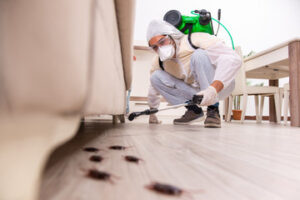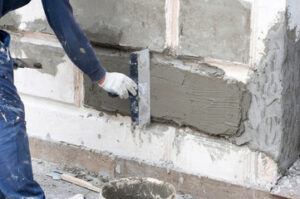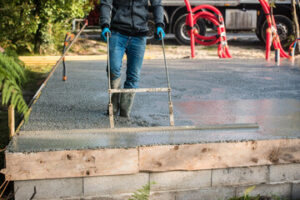Laser Hair Removal In Langley is a safe and effective treatment for anyone wanting to remove or thin unwanted body hair. It is especially popular for women, but it can be performed anywhere on the body.

It’s important to avoid plucking, waxing or shaving in the treatment area for six weeks prior to your appointment. This will help the laser reach and disable the follicles.
Laser hair removal is a safe, non-surgical procedure that uses a light beam to eliminate unwanted body hair. The pigment in your hair absorbs the light from the laser’s tip and converts it to heat, which damages the hair follicle, preventing it from producing new hair. The result is permanent hair reduction in your target area. It can take two or three weeks after your first treatment to begin seeing results and 8-12 treatments to achieve the full effect.
The procedure is quick and virtually pain-free. However, a topical numbing cream is often applied before the treatment to help ease the sensation. You should avoid plucking, waxing, and bleaching the area prior to laser hair removal, as these methods interfere with the laser’s effectiveness. Additionally, you should avoid tanning in the sun or at a salon (natural or artificial) for 6 weeks prior to treatment, as this can make the skin less responsive.
Before starting the process, your practitioner will put on goggles or a shield to protect your eyes. They will then adjust the laser equipment according to your skin color and thickness, and they may trim the hair that will be treated. They will also cover the treatment area with a gel to protect the surface of your skin.
During the laser process, you will feel pulses of warmth and then a cool sensation from the cooling device. This is normal and is what makes the procedure so comfortable. You can expect the procedure to last from a few minutes for smaller areas to an hour or more for large areas.
Laser hair removal works on any skin tone, and it is the most popular way to permanently remove unwanted body hair. It’s ideal for men and women who are tired of shaving, waxing, or tweezing, and it can be used to remove unwanted hair from the face, armpits, legs, back, and bikini area. Sign up for a free consultation today to see if laser hair removal is right for you! SKINNEY Medspa, voted the best laser hair removal NYC has to offer, can provide you with the smooth skin you desire.
Safety
Laser hair removal uses heat from a laser to destroy the hair follicles and reduce or eliminate unwanted body hair. This procedure is safe when performed by an experienced medical professional. However, the laser can cause severe burns if it is used incorrectly. To avoid permanent skin damage, only licensed and certified doctors or technicians should perform this procedure. Patients should take steps to ensure the safety of the procedure, including researching the background of any doctor or technician who performs laser treatment.
Typically, the lasers used in laser hair removal are pulsed beams of visible light or invisible near-infrared radiation. Infrared light penetrates deeper into the skin, while visible light is absorbed at higher temperatures closer to the surface of the skin. In addition, some non-laser intense pulsed light (IPL) systems use both visible and near-infrared wavelengths for different effects.
The primary hazard associated with laser hair removal facilities is the inadvertent exposure of a person’s eyes or skin to high power laser radiation. This exposure can occur from direct radiation coming directly from the laser to a person or from the beam reflected from a mirror or other reflective surface.
A person’s eyes can be injured from the laser’s radiation even if the person is wearing protective eyewear. This is because the lens and cornea of a person’s eyes absorb very little of the laser radiation, leaving the surrounding tissues as the only absorbing targets. The most common eye injuries from laser hair removal procedures come from the direct reflection of the laser radiation on a person’s eyes or face.
There are several ways to help prepare for a laser hair removal session, such as shaving the day of the appointment and avoiding tanning. Patients should also avoid waxing or plucking hairs before the treatment to prevent regrowth of the treated area. If a patient has dark skin, the doctor might prescribe a skin bleaching cream to lighten the color of the skin before treatment. This is to make sure the underlying skin and hair are not damaged by the laser’s radiation.
Side Effects
Laser Hair Removal uses concentrated light to prevent the growth of unwanted hair. It’s one of the top five nonsurgical cosmetic procedures performed in the United States and is regulated by the FDA for safety. You should only have this treatment done by a medical doctor who is skilled in using laser technology and has an in-depth understanding of your skin.
Laser treatments cause some side effects, including itching, redness and swelling. These reactions are normal and should resolve within a few hours. You may also experience skin crusting, which is usually a minor issue, but it can lead to scabbing or scarring. This condition is more likely when you use at-home laser kits and not a professional medical provider who has extensive training and knowledge of your skin type.
Depending on the area treated, you may want to have numbing cream applied before your appointment. But this is not required for the majority of patients, who find the procedure quick and pain-free.
Before your laser hair removal session, you should avoid plucking, waxing and electrolysis for 6 weeks. These methods remove the hairs’ roots and could interfere with laser treatment. You should also apply a cold gel or cooling device to your skin before the procedure, which helps prevent the laser from burning your skin.
Most people who undergo laser hair removal require three to seven sessions to achieve their desired results. It’s important to follow your doctor’s instructions both before and after treatment, which includes avoiding sunlight or using a sunblock with SPF 30 or higher. You should also avoid taking any medications that thin your blood and reduce your blood flow.
Before your first laser hair removal appointment, you should shave the area that’ll be treated. Shaving the area makes it easier for the laser to target the pigment and destroy the hair follicles, which can help you achieve your desired results faster. You should also avoid tanning beds for six weeks before your session, as the UV rays can affect the outcome of the laser hair removal treatment.
Cost
Laser hair removal is a more expensive option than shaving and waxing, but it saves time and effort in the long run. It also prevents the regrowth of unwanted hair, so it is an investment that pays off over time. However, the initial cost of laser treatment is often a deterrent for those considering it.
The laser beam heats the pigment and damages the hair follicle, so it can effectively remove unwanted hair from all skin tones and textures. It is not recommended for the eyelids or eyebrows because it can cause permanent loss of vision, but otherwise it is a safe and effective treatment for all areas of the body.
As with all cosmetic treatments, the costs of laser hair removal can vary based on your needs and the practitioner. The location and reputation of the clinic are important factors, but so is the type of laser used and the physician’s experience.
You will also need to consider the size of your desired treatment area. Larger areas like the back will require more sessions than smaller areas. Generally, a single session can range from $200 to $600 per area treated, and you may need four to six treatments overall.
Additionally, the type of laser and your skin tone can impact the price. Some lasers are better suited to lighter hair and skin, while others will not work on darker or tanned skin. It is always best to consult with a professional and understand all of the costs associated with laser hair removal before you commit to the procedure.
Lastly, laser hair removal is considered a cosmetic procedure, so it is unlikely to be covered by your health insurance. However, if you have a medical need for the procedure, such as gender dysphoria or severe recurrent infections like pilonidal cysts, then you might be eligible for coverage.








